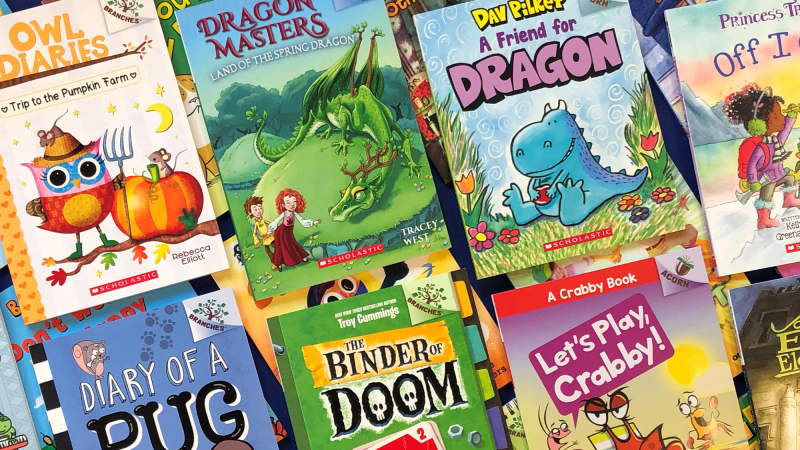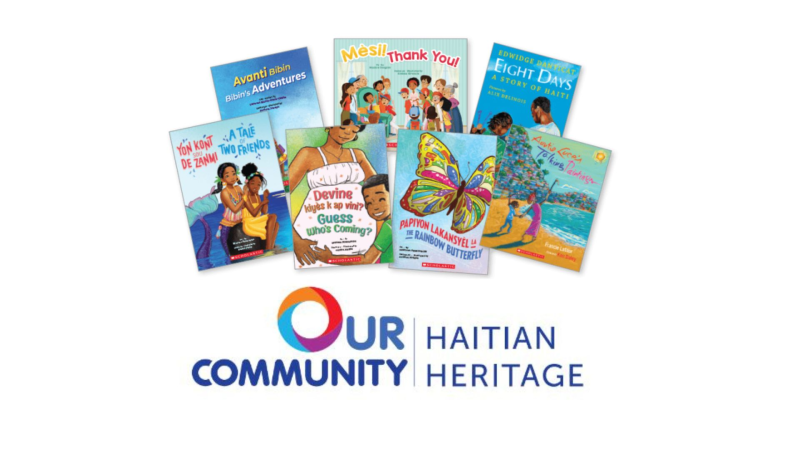Guest blog post from Katie Carella, Executive Editor of Acorn and Branches
Finding the right books for new and transitional readers can be tough. Children are still developing confidence in their skills, and any hurdle—a boring topic, not enough illustrations, a slow plotline—is enough to make them put a book down and do anything else. We asked Katie Carella—former 1st, 2nd, and 3rd grade teacher and Executive Editor of Acorn and Branches—for advice on helping kids find books they connect with at this critical stage. See below for her expert tips!
Branches is Scholastic’s early chapter book line aimed at newly independent readers ages 5-8. Branches books include easy-to-read and decodable text, high-interest content, fast-paced plots, and illustrations on every page. They have a 2nd grade reading level, spanning Guided Reading Levels L-P, and can appeal to kids across grades K-3 and beyond.
Acorn is Scholastic's early reader line aimed at children ages 4-7 who are learning to read. These books include easy-to-read text, a short-story format, and full-color artwork on every page. They have a 1st grade reading level, spanning Guided Reading Levels E-K, and can appeal to kids across grades PreK-2 and beyond.
Learn more about Branches at scholastic.com/branches and Acorn at scholastic.com/acorn
Let Kids Choose Their Own Books
Choice is key to growing engaged, passionate readers. When you let your child pick what they want to read, books feel like a fun, exciting adventure instead of something they have to do.
This is why Acorn and Branches have a series for every kid—humor, adventure, animal fantasy, monsters, lite horror, adorable owls, unicorn magic, friendship, superheroes, mystery and more. We want all new and transitional readers to find something they’re excited about!
Make book choice a fun activity you do together. Take trips to your local bookstore or library on a regular basis so that your child (and you!) can frequently choose new books. Once the trip becomes routine, your child will come to look forward to discovering new books—watch their eyes light up as they dive into the world they’ve chosen to explore!
Never say “That book is too easy/hard for you!”
All book choices are good book choices. If the book is “too easy,” your child will gain reading fluency and stamina and will be better prepared for more challenging texts in the future. If the book is “too hard,” your child may struggle, but they will also learn decoding skills to pull meaning from what they can read. Both of these experiences ultimately grow your child’s vocabulary and reading skill set.
Fast-paced Plots and Cliff-hangers are Key!
New and transitional readers need to be engaged throughout an entire book so they don’t lose steam along the way. Acorn books are made up of short stories that can be read individually, but each story moves quickly from beginning to end. All Branches books feature cliff-hanger chapter endings so readers cannot put the books down. As a parent wrote in a recent fan letter for The Notebook of Doom series: “My son is 8 years old and has been struggling with reading since he started school. But the biggest change in him has been from your books. Once he started reading them, he couldn’t put them down.” The proof is in the pudding!
Set Attainable Reading Goals
New readers need to find success quickly in order to build confidence right from the start! That’s why Acorn books feature multiple, self-contained stories—children can easily finish one Acorn story at a time and feel a sense of accomplishment. Children can even use a special first bookmark to hold their place between stories!
Illustrations, Illustrations, Illustrations!
Children (and adults) “read” pictures for the same reason as they read text—to gain information. And for children transitioning out of picture books, books without pictures can seem too intimidating.
That’s why Acorn and Branches books feature artwork on every page, often including speech bubbles and comic panels, too—we want our books to appear inviting to children who might be hesitant to try out longer, more text-heavy books. Our purposeful illustrations also help children decode unfamiliar text, a reading skill children should be encouraged to use!
Pick up a Book Yourself!
One of the most important things you can do as an adult is model good reading behavior. Turn off the TV, put away your phone, and spend time with a book. Your child will see that books offer their own enjoyment. You could even schedule time for everyone to read together (but separately!) to show it’s a priority and that it’s fun!
You should also ask your child to talk about what they’re reading. This will help you connect around books and (gently!) assess and support reading comprehension. The key is to discuss the book in such a way that it feels natural and conversational—not at all like a quiz. In the back of every Branches book, we provide a Questions & Activities page that could be helpful in these conversations. Maybe try to go through this page with your child after they finish a Branches book. I promise our questions and activities are engaging!
Make Storytelling Fun!
Children often feel more confident as artists than as writers, so let them lean on their strengths to create stories. In the back of each Acorn book, we include a drawing lesson paired with a simple writing prompt.This exercise helps build children’s critical-thinking skills from the very beginning of their reading careers and encourages them to both write and draw to tell their own stories.
If you’d like Acorn & Branches updates and even more tips on growing readers from Katie Carella, please follow her on Twitter @KatieCarella.






